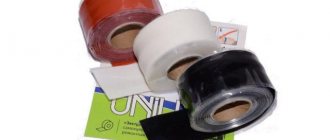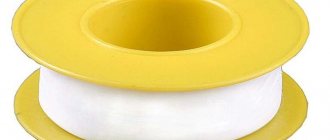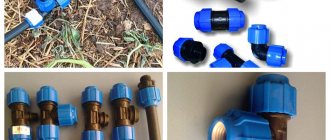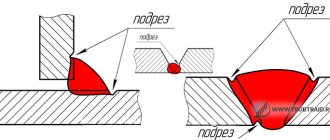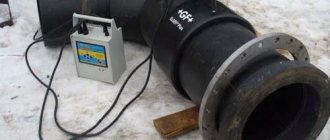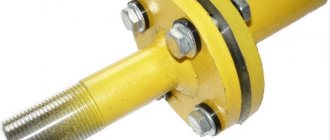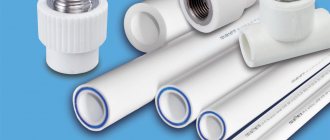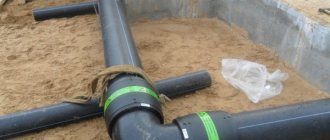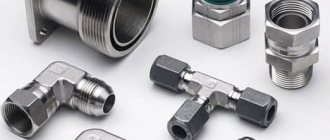To avoid leaks in heating and water pipes, you need to properly seal the threaded connections. To seal gas and water, plumbers use linen tow with red lead, sealing paste or paint. Such methods have been tested over the years, but they have several disadvantages: packaging takes a lot of time, hands and pipes remain dirty afterwards, and the final appearance of the connection is unattractive. Therefore, such methods are more suitable for pipes on the outside of the building, for street work. But in a living room, in order for the installation work to look neat, other windings are needed, one of which is fum tape.
PTFE sealing material, in other words, fum tape, is a sealant that is used to connect gas and water supply pipes. Replaces rubber gaskets. The principle of its operation is aimed at preventing floods, leaks, and water and gas leaks. Fum tape is a modern material in the form of a film. Its effectiveness directly depends on the correct winding of the film on the thread.
Where is it used?
Due to its properties and characteristics, FUM tape is used in most situations where sealing treatment is required.
- Water pipes . The most important thing that FUM tape is used for is sealing water connections. The material is water-repellent, which makes it almost indispensable for fastening water pipes and parts during the assembly and installation of equipment.
- Gas pipeline . The film can be made gas-tight, and it can be used to install gas appliances and meters. However, not every FUM tape is suitable for this purpose; you need to purchase a specialized tape for gas.
- Technique . The material is characterized by resistance to various types of influences, therefore it is actively used to repair internal mechanisms of cars and various technical devices.
Heating pipes fastened with tape Source re-st.ru
What is tow and how to work with it
Before fum tape appeared on the market, plumbing tow, which was flax fibers, was used to seal threaded connections of pipes. Optimal results were achieved by coating the layer of tow wound on the thread with a small amount of oil paint. Such a connection was difficult to disassemble after several years.
Now sanitary linen in the form of long silky threads is used along with new sealing materials. Only now a layer of sealing paste is applied on top of the winding, ensuring a reliable and durable connection. The paste protects the flax from rotting and makes dismantling easier if necessary.
Flax fibers are long, thin, strong, fit tightly into the grooves of the thread and do not deform when screwed
Pros and cons of using
The main advantage of choosing tape is its availability. FUM is sold at a low price, cheaper than flax tow and most other sealants used in plumbing.
The material is characterized by ease of installation. With proper skill, winding the tape occurs in a matter of seconds, but for this you should practice winding it on connections of different diameters for some time.
An important advantage of using tape is that the parts fastened with it can be easily disassembled. The connections do not freeze tightly; they can be disassembled even years after installation.
The main disadvantage of the material is that it is not the most reliable of seals, therefore, as a rule, it is not used for industrial installation. However, for household repairs the hermetic properties of FUM are quite sufficient.
Another disadvantage is that the tape often protrudes outward from the joints, so the pipes may look sloppy because of this.
Tape on thread Source sdelairukami.ru
Cold and hot water
BUT wait, why use tape or thread then? Why were they created at all? It's simple - they are perfect for waterways. Where there is a constant temperature.
For example, for cold water. Where there is no thermal expansion and then cooling, there are no high temperatures. It seals just fine.
For hot water you need to think about it. It is clear that the pipes are almost always heated; they are hot in one position. No one will turn them down, the temperature is also constant - THIS IS A PLUS. BUT, the water may be turned off for a while, for example, during seasonal testing, then the pipes may also cool down and leaks may appear at the joints. Also, over time, FUM seals can dry out, as happened to me.
Now we are watching a useful video.
EVENTUALLY. Where there are no high temperatures, no expansion of metals, FUM can and even should be used, it’s an excellent means. For heating and hot water, I would advise you to use Paklya with sealing paste, it has been working for decades.
This is where I end, I think my materials were useful to you. Read our construction site.
Specifications
Let's consider the technical characteristics of the FUM tape, which determine its properties:
- the material is characterized by resistance to damage;
- has plasticity;
- retains its properties for a long time and does not need regular replacement;
- is environmentally friendly and does not emit harmful substances;
- heat-resistant, able to withstand a wide range of temperatures;
- the thickness is only two tenths of a millimeter;
- has dielectric properties and gas impermeability;
- elastic, capable of stretching almost twice its original length.
Anaerobic gel sealants sanitary gel
Another modern material for sealing pipe threads is sanitary gel. Reliable compaction occurs due to the polymer component of the gel. After hardening, sanitary gel does not shrink or expand, is resistant to temperature changes (from -60 to +150) and pressure surges, and has proven itself in various environments: water, natural and liquefied gas, heating antifreeze.
How to seal a plumbing connection: flax, fum tape, anaerobic sealant - a specialist decides
Sanitary gel is produced in three types:
- In green tubes - easy dismantling.
- In blue - medium dismantling.
- In red (Stop Master Gel) – dismantling with heating.
Installation using sanitary gel is simple: shake the tube and apply the gel in a thick layer around the entire circumference of the thread, distribute it evenly (with a brush, a special spatula), and assemble the structure. Excess gel is removed with a rag. Polymerization of the gel occurs in 15–20 minutes.
Using FUM for water connections
The use of sealed film for water connections has certain advantages compared, for example, with the use of flax tow and sealant
Taped water connections Source userapi.com
See also: Catalog of companies that specialize in water supply and sewerage work.
When using sealant, depending on its type, the connection can be sealed almost tightly, and if dismantling is necessary, the pipes will take a long time to disassemble.
The advantage of using FUM tape for water is that it does not interfere with the dismantling of pipes, is sufficiently waterproof and is easier to use. It can also be used together with flax as an additional sealant.
Fum tape brands
A sealing film is made from fluoroplastic f4 by rolling out the fibers and drying them in a vacuum chamber. The bundles are wound into rolls, the width of which is 10–16 mm. Lubricants can be added to the composition of the material, which depend on the brand of fum tape.
- FUM 1. Used for sealing pipelines that operate in aggressive environments, in chemical plants and oil refineries. Withstands high temperatures, which allows it to be used for heating pipes. Contains petroleum jelly as a lubricant.
- FUM 2. Intended for use in systems in contact with an oxygen environment and oxidizing agents. It is used at gasified stations and oxygen shops. The sealed layer is durable and can withstand constant pressure. It does not contain any additives.
- FUM 3. A mixture of the first two brands. Used in systems that come into contact with clean media. It does not contain impurities and lubricants.
Fum tape is also divided according to parameters. The width is in the range of 10–100 mm, thickness 0.1–2 mm. The choice of required parameters depends on the task to be performed. The larger the connection and the deeper the thread, the tighter and wider the application. But if you don’t have a seal of the required size at hand, these requirements are regulated by the number of turns: thin film can be wound more, thick film less.
Fum tape is also divided by color: yellow and white. The yellow one is intended for gas equipment, the white one is wound in all other industries.
Using FUM for a gas pipeline
To fasten gas pipeline parts and install gas equipment, you should use only special FUM tape for gas. It must be supplied with a certificate of conformity confirming its suitability for use on gas pipes.
The special film for gas is yellow. It is made wider - up to two centimeters in width.
Yellow FUM tape for gas Source megastroy.com
The use of the material is possible only when sealing can only be achieved using a sealant. In the case of rubber hoses, as well as metal hoses, the sealing function is provided by a special gasket. In this case, the additional seal will not add tightness to the connection, and may even break it, as it will interfere with the tight fit of the gasket.
Precautionary measures
- It is not recommended to wind the seal using two or more pieces - this will compromise the tightness and strength of the connection.
- The tape on the thread should not be partially unwound, since if it is applied again, the connection will lose reliability. If winding is unsuccessful, the material should be removed completely and the process repeated.
- If, when connecting the elements, too much tension is created, which can lead to breakage, the tape will not be loosened. In this case, you also need to apply the seal again, removing the old section.
FUM tape is a material that is sufficiently reliable when sealing threaded connections. Its correct use will ensure the tightness of any pipeline even for a person who does not have extensive experience in plumbing work.
- Author: Vladimir Doneshko
Rate this article:
- 5
- 4
- 3
- 2
- 1
(19 votes, average: 2.9 out of 5)
Share with your friends!
How to wind tape
In fact, to figure out how to properly wind FUM tape onto a thread, you do not need to have any special skills. However, certain operating features should be taken into account in order to protect connections from leaks.
Before winding FUM tape, you must first thoroughly clean the parts. All joints must be treated with a solvent and dried to prevent debris from getting under the tape.
Winding tape onto a thread Source sovet-ingenera.com
Material properties
The main advantage of fluoroplastic is its high plasticity.
In addition, the material is durable, non-toxic, chemically inert, and thermally resistant. FUM tape is capable of operating at pressures up to 40 MPa (relevant for antler baths).
The temperature range is minus 60 – plus 200 degrees.
When heated above 260 degrees, the structure of the material begins to deteriorate, and highly volatile fluoride compounds are released.
Average material characteristics:
- thickness 0.04 - 0.2 millimeters;
- width – 10, 15, 20, 60 millimeters;
- fracture tension 40 – 60 kg/cm2;
- lubricant content 0.3 – 20%;
- 100% elongation before breaking.
Things to consider
When working with tape, it is necessary to take into account some of its characteristic features.
- The tape is quite slippery, so you need to wind it carefully so that the strips do not move out of bounds. It is advisable not to allow the edge to fall out into the inside of the connection.
How the tape should be positioned on the thread Source abro-ind.ru
- Once the film has already been wound, it cannot be unwound and re-wound - this will break the tightness. Try to process it carefully right away, otherwise you will end up wasting a lot of material.
- Also, the tightness will be broken if there is a need to loosen the connection. In this case, you will also have to rewind the material.
Other seal options
Of course, FUM tape is not the only existing option for sealing joints. Among others, linen tow should be highlighted, along with which various types of sealants, as well as plumbing thread, are used to fasten pipe parts. Let's consider their advantages and disadvantages in comparison with FUM.
Flax tow
Linen is also one of the most popular materials. Just like FUM, it is customary to wrap tow in a dense layer.
It is important to wind the tow carefully and tightly, filling the thread completely along the turns. The outside of the fibers is additionally coated with paint or sealant. This leads to the main disadvantage of this material. It should be borne in mind that if paint is used, the connections cannot be dismantled and the pipes will be unsuitable for repair.
Flax tow Source ytimg.com
Also, the disadvantage of this material is its relative fragility. Unlike tape, flax is subject to gradual decomposition under the influence of moisture.
The main advantages of tow in comparison with FUM are:
- Adjustability. After winding and securing the connection, it is possible to unscrew it at a slight angle without loss of tightness and the need to replace the sealing material.
- Reliable sealing, high degree of tightness and ability to absorb liquid.
- High resistance to various types of physical influences.
- Easy to disassemble the connection.
If you have to choose what is better to use – ribbon or linen tow, then there is no definite answer. As a rule, it is recommended to use tow for intermediate pipeline connections. The tape is more suitable for securing taps, meters and mixers.
Sealants
When using flax tow, for a better fit and seal, the joint is additionally treated with a liquid sealant.
Liquid sealants Source ad-cd.net
Advantages and disadvantages
The advantages of the winding include:
- The first difference from tow is that fumlenta does not absorb water. Therefore, the joining does not require additional sealing in the form of paint or putty;
- Ease of use - the seal is packaged in small reels, from which it is easy to screw directly onto the thread;
- Aesthetic processing - the material does not protrude beyond the edges, as happens with tow. In addition, the tape is produced in colors that match the colors of plastic pipes and blends into the general background;
- Linen tow becomes unusable over time and requires replacement, but fluoroplastic does not collapse and lasts as long as a fitting or siphon;
- Easy dismantling in case of replacement of the structure. The winding is simply removed without additional stripping;
- After winding the seal, no significant effort is required to connect the parts;
- Widespread - it can always be purchased in several widths and thicknesses in any construction market.
There are minor disadvantages:
- Not suitable for triangular metal steel threads, as the material may be damaged by sharp edges and will not function as a sealant;
- The excess winding is not compacted like traditional tow, so you need to dose the winding turns. Usually this is 3-10 revolutions;
- The seal is not suitable for equipment that produces vibration during operation. During operation, shaking deprives the fluoroplastic of its inherent properties, breaking the tightness.
Briefly about the main thing
FUM tape is one of the popular and effective sealing options. It is affordable, easy to use, and does not create problems during subsequent repairs.
There are several simple rules on how to wind FUM tape onto a thread:
- the winding area must be cleaned;
- the tape is wound along the thread - how the nut will move along it;
- When winding the tape, you need to tighten it a little;
- Usually four layers are enough, but sometimes more are required;
- After winding the tape, the thread relief should be palpable.
Ratings 0
Read later
We have prepared a detailed guide to choosing and using fum tape for novice craftsmen and those who are used to doing everything in the house with their own hands. Our advice may also be useful to experienced plumbers, because refreshing your knowledge is never a bad idea.
From our guide you will learn who and when invented fum tape for water, what does Apollo 11 have to do with it, how to properly wind fum on a thread and - most importantly - how to avoid leaks.
Go!
Just one tug: a brief history of fum tape
There is not much information on the Internet about the history of the invention of fum tape. There is only one source - Wikipedia. From there you will learn that the material on which the fum tape is made - polytetrafluoroethylene, PTFE or PTFE, was accidentally discovered by one of the employees of the chemical giant DuPont back in 1938. And registered under the trademark “Teflon”. You will learn that fluoroplastics came to the USSR on American ships during the Second World War, and their production in our country was mastered and brought to Union scale at the Kirovo-Chepetsk plant.
We went deeper. What can you do, the craving for interesting facts about the simplest and most common things is inextinguishable in the Santekhmaster Group team.
So. The PTFE material was actually invented by DuPont. Its extraordinary properties became interested in the talented chemist and experimenter Bill Gore, who had a master's degree in physical chemistry and led research at DuPont for 16 years. Bill was truly sick of chemistry; he managed to “infect” his entire family with this science. The company became cramped for him, he dreamed of his own business, and one day Bill Gore left DuPont to open his own company. He did this first in the basement of his house. And then he built one of the most successful American companies in the world, WL Gore & Associates, which is still led by his son, Bob Gore.
PTFE, in the hands of the Gore family, developed its miraculous properties and found application in medicine, heavy industry, and the space industry. PTFE cables were used during the Apollo 11 space mission. A Gore-brand cable connected the craft to a seismograph placed on the lunar surface.
It would seem that if your product has been in outer space, your homeland (including) is proud of it, and the whole world is not so jealous, you can calm down. Launched production and rested on your laurels. But it was not there. Just after the Apollo 11 flight, WL Gore & Associates received a very unusual order. The company's client, in order to develop a new market, needed a cheap, but at the same time durable plumbing tape. And since the Mountains could make cables “for the moon,” then let them make a tape for plumbing.
Bob Gore, who by that time, by the way, was still quite young, had become the head of research at his father’s company, took this order as a challenge. It took a long time to get a thin elastic tape out of a PTFE bundle. And although Bob had all the company’s power at his disposal, he felt that complex technology would not help him; the secret of PTFE lay in something else. The truth is somewhere nearby, as they will later say in one world-famous series.
What was Bob Gore doing? He heated the PTFE bundle and very slowly and carefully tried to stretch it. The tourniquet obediently stretched a couple of centimeters and then broke. When Bob was completely tired of all this - but he was not ready to give up the idea and the order - he decided to experiment. “If before we were slowly stretching the tourniquet,” thought Bob, sitting one night in the basement laboratory of his house, “now I’ll just make a jerk.”
And did. The PTFE harness not only did not break, but stretched - easily and simply - to the entire width of Bob's arms. This movement - the jerk - then formed the basis of the PTFE stretching process, which reaches 1000%.
The experiment, by the way, turned out to be not only revolutionary, but also fun. The next day, at the WL Gore & Associates production facility, everyone was pulling the harnesses in different directions. And Bob’s father, Bill Gore, could not contain his delight after his son’s report. He immediately understood the possibilities of the new form of PTFE and what things could be created based on it. Gore Jr.'s discovery was a turning point in both his career and the history of WL Gore and Associates. Thanks to him, all kinds of medical implants, ultra-durable waterproof fabric for clothes and shoes GORE-Tex and, of course, sanitary fum tape have appeared in the life of a modern person.
How to choose fum tape for water?
Today, fum tape is produced by manufacturers around the world. Italian FADO and VALTEC tapes, Belgian HPX, and Russian BVB-Alliance are considered to be of decent quality. When choosing fum tape, pay attention first of all to these brands.
In general, fum tape is widely represented on the Russian sealing market. Its packaging is standard - a plastic reel with white tape inside. The tape itself - and this is important - differs in width, thickness and length. The length for choosing a beginner is not so relevant, the only question here is consumption, but the thickness and width play a role when winding on a certain type of thread and the scope of application of the tape.
Let's tell you in more detail.
Fum tape can be wide and narrow, thick and thin. A narrow tape is considered to be up to 12 mm, wide - up to 19 mm and more. A thin tape is one that is translucent, i.e. an object is visible through it. But it is not transparent, it does not look like tape. The thickness of the thin tape is the same for all manufacturers - 0.12; 0.75 mm. Thick tape is denser, its thickness is 0.1-0.2 mm.
Why would a beginner need to know this? Then, different threads are sealed with different tapes. For large 1-inch threads, it is better to use a wide, thick fum tape. It is easier to wind and costs less. But for small threads, for example, ¼ inch, a thin, narrow fum tape is suitable, which is first stretched to the state of a thread, placed in each thread, and then several layers of the entire width are made on top.
A good fum tape has the following characteristics:
• high elasticity and strength; • heat resistance (from -40˚C to +150˚C); • chemical resistance to solvents and acids; • environmental friendliness; • resistance to fungi and bacteria; • protection of the thread and the entire connection from corrosion; • unlimited service life.
How to find such a tape? For a beginner - only through experience. If you don’t find the manufacturers we listed above in your local store, buy several tapes of different thicknesses and widths to test them for strength and evaluate the result in advance. Let your tool suitcase at home have at least 4 fum tapes of different models. If you are going to seal the threads with tape for the first time, buy a few fittings as well. Assemble the connection empty to understand how many turns need to be made on the working connection, how to wind it correctly and whether it is convenient for you to use fum tape in general.
Scope of application and winding
Traditionally, fum tape is used to assemble home water supply and irrigation pipelines on the site. It also copes with other simple tasks:
— replacement of rubber gaskets;
— repair of mixers;
— plastic thread seal;
— minor household repairs (as a more aesthetic substitute for electrical tape).
We recommend that the home handyman seal with fum tape those connections in the water supply system in which leaks are easy to notice and fix. But it is wiser, at least at the beginning of your plumbing practice, to use fum tape in safe places - when assembling an irrigation pipeline or for repairing faucets and shower hoses. Get your hands on it first, and then start assembling critical systems.
Winding tactics:
For large threads (but not larger than 1 inch). Leaks when working with water tape occur due to improper winding. Follow these tactics and everything will work out.
- Take a tape 0.1-0.2 mm thick and 19 mm wide.
- Prepare the carving. If it is not new, clean it and wipe it dry.
- When winding the entire width, secure the beginning of the tape to the thread and press.
- Stretch the tape with force and lay it with tension along the thread so that it falls into the turns. Those. The first few layers of tape should fit the turns, they should be visible.
- You cannot wrap the tape without tension, as you would when wrapping an adhesive plaster around a cut finger. In this case, the tape will quickly slide off the thread and leakage is inevitable.
- Make approximately 5-6 turns, assemble and tighten the connection.
If you choose a thinner and narrower tape to seal large threads, it will take longer to wind. Approximately 13-14 revolutions.
For small carvings.
- Take a tape with a thickness of 0.12 or 0.75 mm and a width of 12 mm.
- Prepare the carving.
- Pull the ribbon out until it becomes a thread.
- Place the thread in each turn along the thread.
- Do this in several layers.
- Then wind the entire width of the thread and secure.
- It may turn out to be more than 20 revolutions.
- Assemble and tighten the connection.
The number of revolutions is impossible to predict. There is no universal advice on how to use fum tape for water. It all depends on the size, material, condition of the thread and the type of tape. High-quality fum will require less consumption. The one that breaks more often during winding will have to be reinforced with additional layers. In any case, fum tape cannot be called economical in consumption. Especially if you also take into account the expense for compaction training.
Other disadvantages of fum tape
Impossibility of adjustment.
After assembly, the connection sometimes needs to be “tightened” and adjusted. This is impossible with fum tape. When the thread is untwisted, the tape inside breaks and the connection loses its tightness.
Thread requirements.
Fum tape loves clean new threads. Preferably with notches so that the tape does not slip. For worn threads, regardless of size, it is recommended to use a thicker tape. For large-diameter threads, fum tape is not economical in consumption.
Quality.
You won't know until you buy it. A reel of fum tape can easily be called a surprise box. To determine whether the material can be worked with, stretch the tape slightly before winding. Does it tear quickly? Get a new coil. It’s not for nothing that we advised buying a lot at once.
Price.
Fum tape is considered one of the cheapest materials. This is what attracts newcomers. However, not everything is so simple. The price range for fum is very wide - from 20 rubles to 120. Taking into account the uneconomical consumption, the cost of one connection with a fum tape will be equal to the cost of a connection with sanitary thread, which is a more modern material and is more expensive.
Stock up on various sealing materials. Replenish your collection with modern sealants: winding, anaerobic sealants, threads. Don't rely on one remedy, nothing is universal. And try to keep up with market news.
